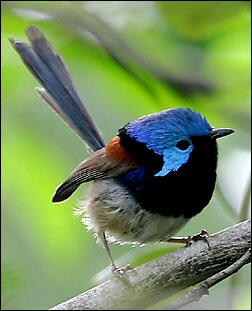Passerines

Passerines are also known as perching birds, the literal meaning of the word, in North America they are called songbirds although not all have calls one could grace with that name. There is one Fatbirder page for each of the families listed below. Each page carries a photograph of one member of that family; if you find one that does not it is because I cannot find one to use I welcome submissions. I also list the species within each family – these follow the latest evidence following DNA sequencing that has led to some birds being moved from one family to another and quite a number of new families being delineated. A few species are still not assigned and remain uncertain… they too are listed. The lists are up to date as of March 2009.
I welcome submissions of introductory paragraphs for these family pages from those of you with a particular interest in that family – you do not need to be an expert – I am happy to recieve introductions from enthusiasts too. The whole purpose of these pages is to share both knowledge of particular families and interest in them.
I hope Fatbirder surfers find these pages of use – let me know if you know of an appropriate website that I should link to if I have overlooked it.
https://fatbirder.com/ornithology-type/passerines/
-
IOC World Bird List
WebsiteLatest taxonomical orders and groupings
-
A Field Guide to Birds on the Web
WebsiteWhat a clever idea -
Avibase
WebsiteAvibase contains taxonomic and distribution information (including maps) for all 10,000 extant species and 22,000 subspecies of birds in the world, plus several extinct and ancient fossil species. The site also offers searching tools for internet sites and images, as well as links to other sites such as ITIS (Integrated Taxonomic Information Systems) and Birdlife threathened birds of the World website. This site is the result of nearly 12 years of work on a database that now contains close to a million records, including 300,000 occurence records and 180,000 synonyms in over a dozen languages. Bird checklists of the world, which offers bird checklists for over 500 countries and regions, has now also been integrated into Avibase, but continues to be available directly from my other web site Bird Links to the World -
Bird Families Of The World
WebsiteFrom the richness of Monterey Bay and the Monterey Peninsula, California (where I live) to the tropical forests of the most remote islands, this site presents bird photos, some opinions, and some (hopefully) helpful information. The major threads are listed below; initially, the emphasis will be on Bird Families of the World. I`ve had an interest in observing and photographing representatives of all the 198 extant families for many years. Yet I feel that the goal is unimportant; it is the journey toward it that interests me. -
LaB O R I Ng - Passeriformes del Pale
WebsiteGuide to West Palearctic Passeriformes [In spanish] for ringers and other birders you can add too. -
The Otterside
WebsiteThe Complete Image Catalog is the showcase for the images of the products of THE OTTER SIDE. It is also intended to be an online educational and reference tool. A brief commentary [will ultimately be] included for each species describing the bird, its habitat, and other interesting facts about it. Photographic details (location, lens, and film) are also included for each image. Many of the species have multiple images intended to show additional visual information about the species -
Zoo in the Wild
WebsiteWelcome, to the first zoo without bars! For many years now, the legitimacy of zoological gardens has been the subject of debate and many towns have, in fact, chosen to close theirs, affirming the animal`s right to freedom. We believe, however, that it is essential to offer a means of getting to know wildlife, and that is what has led us to the idea of a virtual zoo - images, sounds and information that, without condemning animals to suffer, opens the fascinating world of nature to the whole family. It must be emphasized that this zoo exists only and exclusively on the network, and does not refer to any existing park or reserve. Every image you see depicts wild animals in their natural environment. Therefore, technology allowing us to encounter, understand and above all not forget, the fascinating world of nature. Good sections on African and European Birds.
